Sections
Wireless services are the most preferred and popular services of the modern world. Today, we can see that the wireless technology is being brought out faster every year. Rapid boost in the wireless service is due to the advancement of technology. From 1970 till 2014, mobile technology wireless networks have experienced 4 generations of, technology evolution and revolution. These are 1G (first generation), 2G (second generation), 3G (third generation), and 4G (fourth generation).
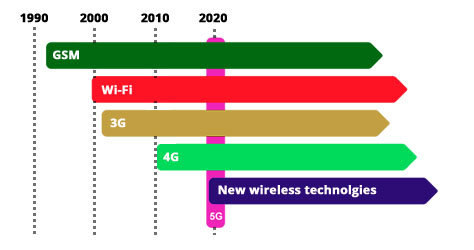
The upcoming term 5G refers to the next generation wireless networks. Through 4G network, numerous advancements were seen like LTE, Verizon XLTE, and LTE Advanced. In the coming years, 5G will be the successor of 4G and it is said that the 5G mobile technology will provide facilities like MP3 recording, camera, large memory, video player, audio player etc. that a user can never imagine. The 5G wireless mobile technology internet networks can be a real wireless communication–World Wide Wireless Web (WWWW). Though 5G is on its way, today there is no standard definition for it. Vendors, analysts and communications service providers (CSPs) think that networks with 5G technologies will start to be popular in the market world around 2020. So 5G can be considered as Vision 2020.
Today, Mobile phones are used by billions of users worldwide. But, the mobile technology behind mobile phones used for communication is not known to many of us. It’s important to know the differences between the mobile phone technologies because the performance of a mobile phone greatly depends on the mobile technology being used. 1G, 2G, 3G & 4G are considered to be the popular generations of today’s wireless telecom connectivity.
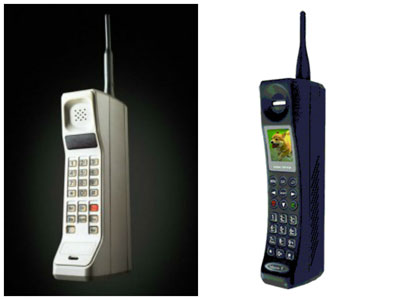
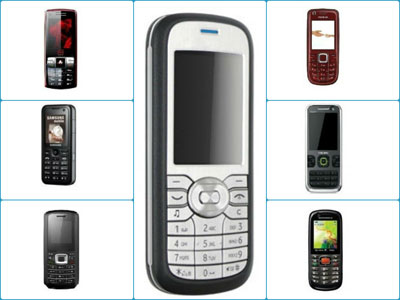
The mobile phones era began with 1G. 1G with Frequency Division Multiple Access and Time Division Multiple Access was the first wireless telecom network system. Its speed ranges from 28kbit/s to 56kbit/s. Companies like Nokia, Motorola built 1G device in 1970 but it was commercially available around 1981. The next era was 2G; a leap from analog to digital. 2G and 2.5G belong to versions of the GSM and CDMA. For the purpose of internet access, GPRS was provided over GSM. 2G came up with services such as text messages, picture messages and MMS (Multimedia Messages). 2.75G was a version of Enhanced GPRS (EGPRS), IMT Single Carrier and Enhanced Data rates for GSM Evolution (EDGE).
Then 3G came, the new Wireless CDMA technology. It is the wireless technology that provides broadband speed internet connection on mobile phones. Further development led to the creation of 3.5G, which provides a better and fast internet connection on phones with the speed of 7.2 Mbps. 4G, popularly known as “fourth generation” or “beyond 3G” cell technology, refers to the better new evolution. Developers are now going for 4G (OFDMA), which will provide internet up to the speed of 1 Gbps.4G promises voice, data and high-quality multimedia in real-time form all the time and anywhere.
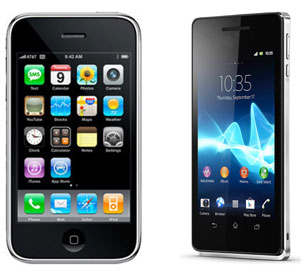
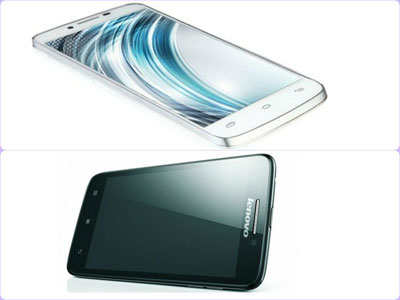
5G is the name currently being given to the next generation of mobile data connectivity that will come after 4G. 5G technology will be a real wireless world which shall be supported by LAS-CDMA (Large Area Synchronized Code Division Multiple Access), MCCDMA (Multi Carrier Code Division Multiple Access), OFDM (Orthogonal frequency division multiplexing), UWB (Ultrawide band), Network Local Multipoint Service (NLMS) and IPv6 (Internet protocol version 6).First whisperings of 5G began during a press event at Mobile World Congress in 2012 with executives from Alcatel-Lucent, Telefónica and Bell Labs. The primary goal with 5G is to make the end user always connected and provide better flexibility.
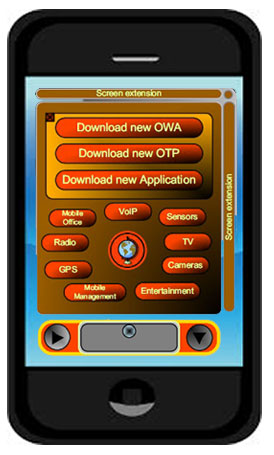
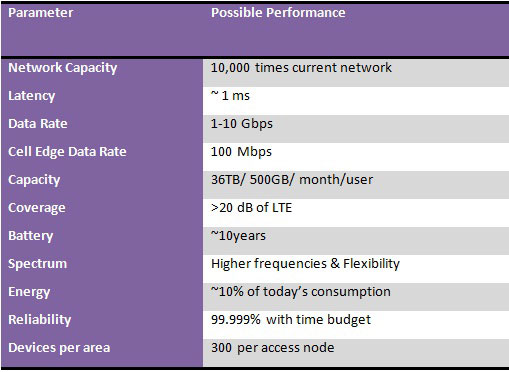
The possible features of the 5G Technology are:
The 5G terminals are said to have modulation schemes, error-control schemes and software defined radios that can be downloaded from the Internet. The terminals are said to have access to different wireless technologies at the same time and it will be able to combine different technologies. In 5G, each network is responsible for handling user mobility. While the terminal will be making the final choice among different mobile/ wireless access network providers for a given service.
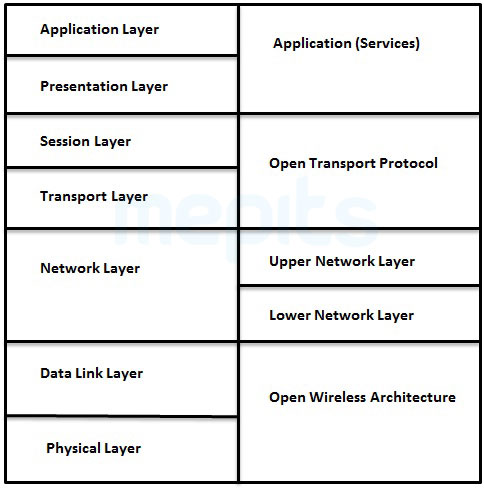
Physical and Medium Access Control layers defines the wireless technology. 5G mobile networks for these layers are likely to be based on Open Wireless Architecture.
The network layer will be IP (Internet Protocol). All mobile networks will use Mobile IP in 5G, and each mobile terminal will be FA (Foreign Agent), keeping the CoA (Care of Address) mapping between its fixed IPv6 address and CoA address for the current wireless network.
For 5G, terminals will be suitable to have transport layer that is possible to be downloaded and installed. Such mobiles will be having the possibility to download (e.g., TCP, RTP etc. or new transport protocol) version targeted to specific wireless technology installed at base stations. This is Open Transport Protocol.
Regarding applications, request from 5G mobile terminal is to provide intelligent QoS management over variety of networks. The 5G phone shall provide possibility for service quality testing and storage of measurement information in information databases in the mobile terminal.
Ericsson, Nokia and Alcatel Lucent helped in the launch of the industry group 5G-PPP (5G Infrastructure Public-Private Partnership) in 2014. The 5G-PPP initiative was taken by the European Union to partner with private companies. Other industry members are European telecommunications companies and European research subsidiaries of Huawei and DOCOMO.
Most of the companies in 5G-PPP participate in a 5G project supported by European Union known as METIS. The main aim of METIS is to bring out 5G by 2020. METIS has co-sponsored, along with state agencies, summits on 5G mobile technologies South Korea (May 2014) and in China (October 2013).
In China, 5G development is being sponsored by three ministries which together established the IMT-2020 (5G) Promotion Group. The aim of IMT-2020 includes developing 5G technologies for China and facilitating cooperation with foreign companies. In South Korea, the 5G Forum is led by SK Telecom. The main aim and objective of the 5G Forum is to achieve global leadership for South Korea in 5G technologies. European Union has announced agreements with Japan and South Korea to develop and deploy 5G. The United Kingdom is involved in organizing 5G groups known as the 5G Innovation Centre, located at University of Surrey.
In May 2013, Samsung announced breaking news in 5G stating that they have developed the world's first "5G" system. It said that the 5G mobile brought out by Samsung will transmit data hundred times faster than 4G and will be able to provide services like 3-D movies, medical services , downloading a high definition film in one second, video games etc.
Last but not the least; we can expect the 5G technology in the coming years which helps in changing the entire network world.
Sections